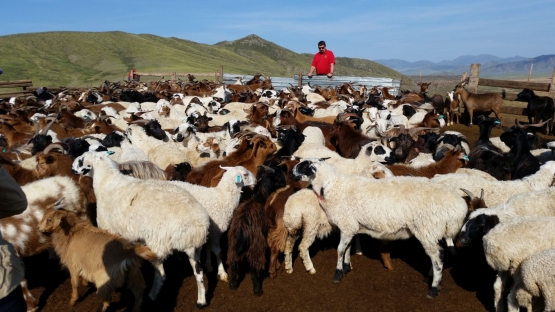Chemicals such as veterinary drugs used in food production to control animal diseases and pests pose chronic and acute human health effects to consumers and constrain trade due to presence of associated residues in edible products. Such hazards (residues) must therefore be regulated through establishment of national or internationally acceptable regulatory standards and guidelines. Scientifically reliable data including how the drug distributes and metabolizes in the animal’s body and the levels of resultant residues retained in edible products, is critical to consumers around the world.
Establishment of the regulatory standards such as maximum residue limits (MRL): the maximum concentration of residue resulting from use of a veterinary drug that is acceptable in or on a food, requires radiolabeled animal studies to determine drug-depletion patterns. These internationally acceptable/harmonized standards benefit trade. Since early 2000s, the annual value of trade in animal products tripled up to $1.7 trillion for emerging economies and developing countries, due to reduction in tariffs through global and regional trade agreements. Each 1 % saving in trade transaction costs is estimated to result in global trade benefit of $43 billion and harmonised standards are known to contribute to such trade enhancement. However, there are still areas to improve. For instance, veterinary drug residues in foods rank very high among trade disputes in the global market and developing countries are severely affected by such disputes (including standards set). This is a concern to Member States especially that for several veterinary drugs of critical importance, MRLs are lacking.
Thus, following urgent calls for support by several Member States, the IAEA is launching a new five-year coordinated research project (CRP) on the metabolism and residue depletion kinetics of a priority list of veterinary drugs used in food-producing animals and for Member States have no data to facilitate the setting of MRLs and address pertinent public health and trade bottlenecks.
The research on metabolism of veterinary drugs helps identify and quantify the nature of the residues and ensures that food from animals treated with veterinary pharmaceuticals is safe for consumers. These studies generate data for instance on: (1) total residues, (2) the depletion of drug residues from edible tissues at varying time intervals following administration, (3) metabolic profile, detailed understanding of the individual components/residues of concern, (4) marker residue(s) for compliance/regulatory purposes and monitoring of appropriate drug used, and (5) identification of target tissue (s) relevant to national or regional monitoring/regulatory programs.
An outcome of the CRP will be developed and enhanced Member States’ capabilities to: undertake disposition studies for veterinary drugs and related substances used in food production; generate scientific/residue data & facilitate setting of national or international safe/tolerance residue levels in foodstuff; and develop science-based public health regulatory programmes that promote trade.
CRP Overall Objective
To support Member States setting regulatory/guideline levels for veterinary drug residues in foods through disposition studies of radiolabeled substances in food producing animals, thus contributing to safeguarding consumers and promoting trade. This project will involve administration of radiolabeled (e.g. C-14, H-3, P-32, N-15, S-35) to food producing animals. Other techniques will include (but not limited to): Autoradiography; liquid scintillation counting; stable isotope-based chromatographic-spectrometric techniques; and radio-HPLC to analyze labeled substances.
Specific Objectives of the CRP are to
- Conduct animal studies using radio-labeled veterinary pharmaceuticals;
- Develop/validate fit-for-purpose analytical methods;
- Conduct radiometric (and complimentary) analysis of residues;
- Report, publish and disseminate findings;
- Transfer developed technology.
How to join:
Please submit your proposals for Research Contract or Agreement by email to the IAEA’s Research Contracts Administration Section, using the appropriate template on the CRA website by (latest) 7th February 2020.
For further information related to this CRP, potential applicants should use the contact form under the CRP page.


